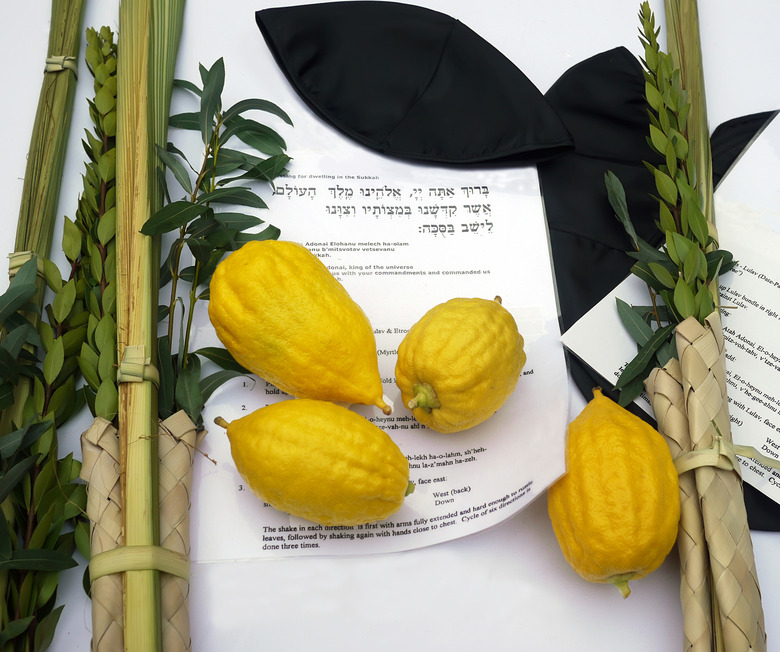What Are A Lulav And Etrog?
During the weeklong Jewish holiday of Sukkot, you may see people gathering in temporary outdoor structures or shaking what look to be large bundles of asparagus and lemons. Maybe someone has even stopped you on the street to ask if you want to partake in this ritual. What you're seeing is Jewish people celebrating a joyful harvest holiday that dates back millennia.
20 Essential Dishes for Rosh Hashanah
And those plants that celebrants of Sukkot are shaking are collectively known as the "Four Species," which are specifically mentioned in the Book of Leviticus in relation to Sukkot. The tallest and most visible of these is called a lulav; it's a palm frond from a date tree, which is meant to symbolize the Jewish scholar. Although you may hear all of the branches referred to collectively as "lulav," only the date frond is specifically named that. It's held in a bundle with three myrtle branches (hadassim) and two willow branches (aravot), which symbolize a person who does good deeds but doesn't know Torah (Jewish scripture) and a person who does not know Torah and does not do good deeds, respectively.
The fourth species is a citrus fruit called an etrog. It's actually not a lemon, even though it does look like one. According to the Jewish Telegraphic Agency, the fruit found its way to ancient Israel from China by way of India and Persia. It's totally edible, but these are not meant for eating.
It's a Jewish tradition on Sukkot to hold the four species and wave them in the morning for a blessing (or prayer). The plants are first waved toward the south, then north, east, upward, downward, and finally westward. The waving celebrates uniting all of the aforementioned people — those who do good deeds, those who don't, those who study Torah, those who don't — and commemorates the bounty of the Holy Land, Israel.
It's not actually easy to just go out and buy lulav and etrog. You'll probably never see them on a shelf in your local Kroger or Whole Foods. To find them, many Jews go to Judaica shops or grocery stores in Orthodox and Chasidic Jewish neighborhoods. Some Jewish temples will even supply their synagogue with the items, because they're not easy to find and they get snapped up quickly by families who can't wait to celebrate.
Another key part of Sukkot is sharing meals in the sukkah, a makeshift outdoor space with three walls and a covering made with natural materials. It looks kind of like a little hut, and it's typically decorated with gourds, apples, corn, and other naturally occurring seasonal items. During this holiday, Jewish people eat autumnal foods to celebrate, like stuffed peppers, kreplach (dumpling) soup, a sweet root vegetable medley called tzimmes, and other seasonal dishes easily transported from the kitchen to the sukkah. Just like everybody else, Jewish people are totally obsessed with fall.
